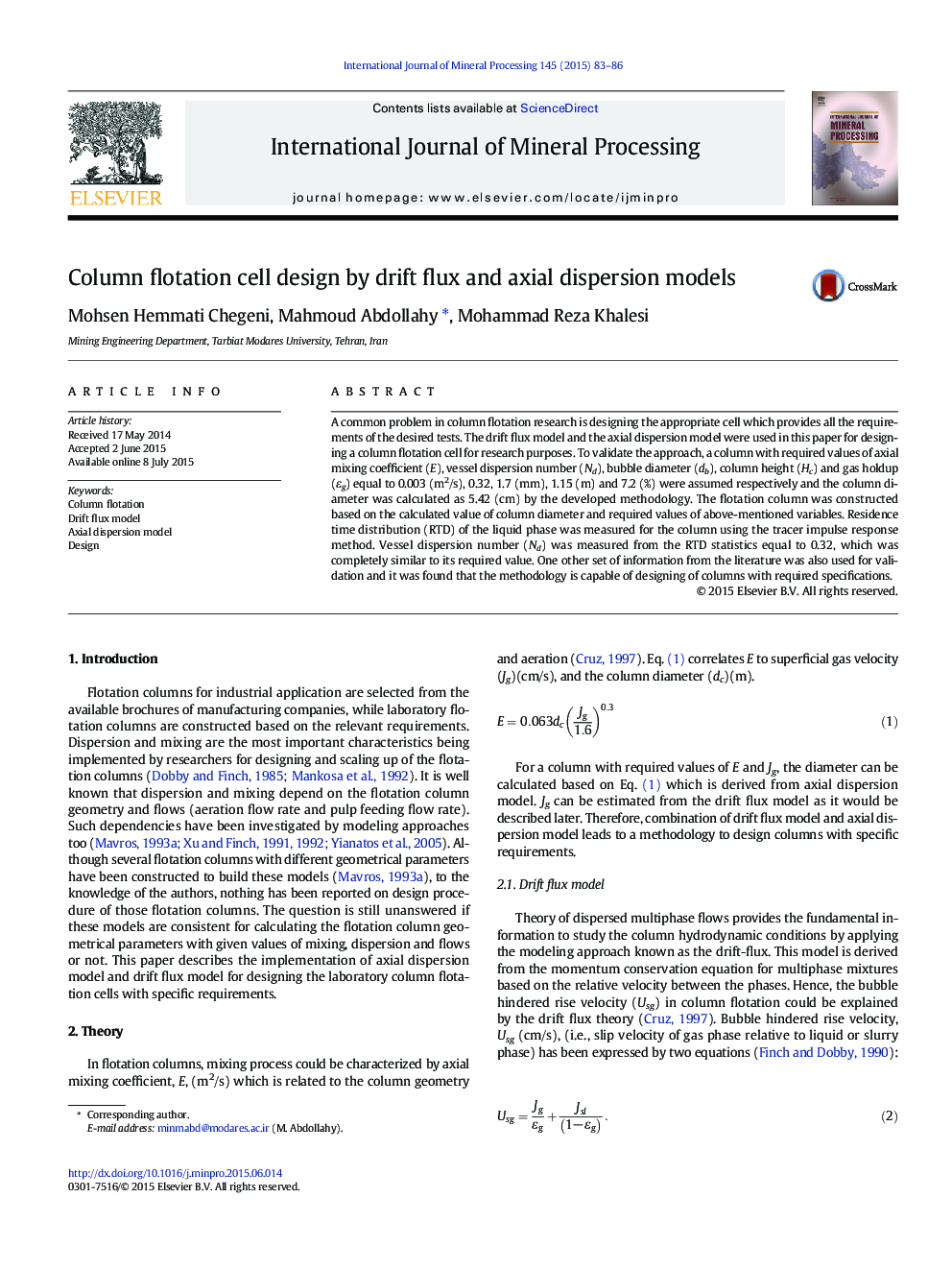| Article ID | Journal | Published Year | Pages | File Type |
|---|---|---|---|---|
| 213852 | International Journal of Mineral Processing | 2015 | 4 Pages |
•A new procedure for designing the laboratory flotation columns has been introduced.•Drift flux and axial dispersion models were used for designing flotation column.•Iterative solution method is applied for estimating the hydrodynamic parameters.•Measured parameters of constructed flotation column were compared to desired ones.•These comparisons validate the consistency of the models for designing the columns.
A common problem in column flotation research is designing the appropriate cell which provides all the requirements of the desired tests. The drift flux model and the axial dispersion model were used in this paper for designing a column flotation cell for research purposes. To validate the approach, a column with required values of axial mixing coefficient (E), vessel dispersion number (Nd), bubble diameter (db), column height (Hc) and gas holdup (εg) equal to 0.003 (m2/s), 0.32, 1.7 (mm), 1.15 (m) and 7.2 (%) were assumed respectively and the column diameter was calculated as 5.42 (cm) by the developed methodology. The flotation column was constructed based on the calculated value of column diameter and required values of above-mentioned variables. Residence time distribution (RTD) of the liquid phase was measured for the column using the tracer impulse response method. Vessel dispersion number (Nd) was measured from the RTD statistics equal to 0.32, which was completely similar to its required value. One other set of information from the literature was also used for validation and it was found that the methodology is capable of designing of columns with required specifications.
